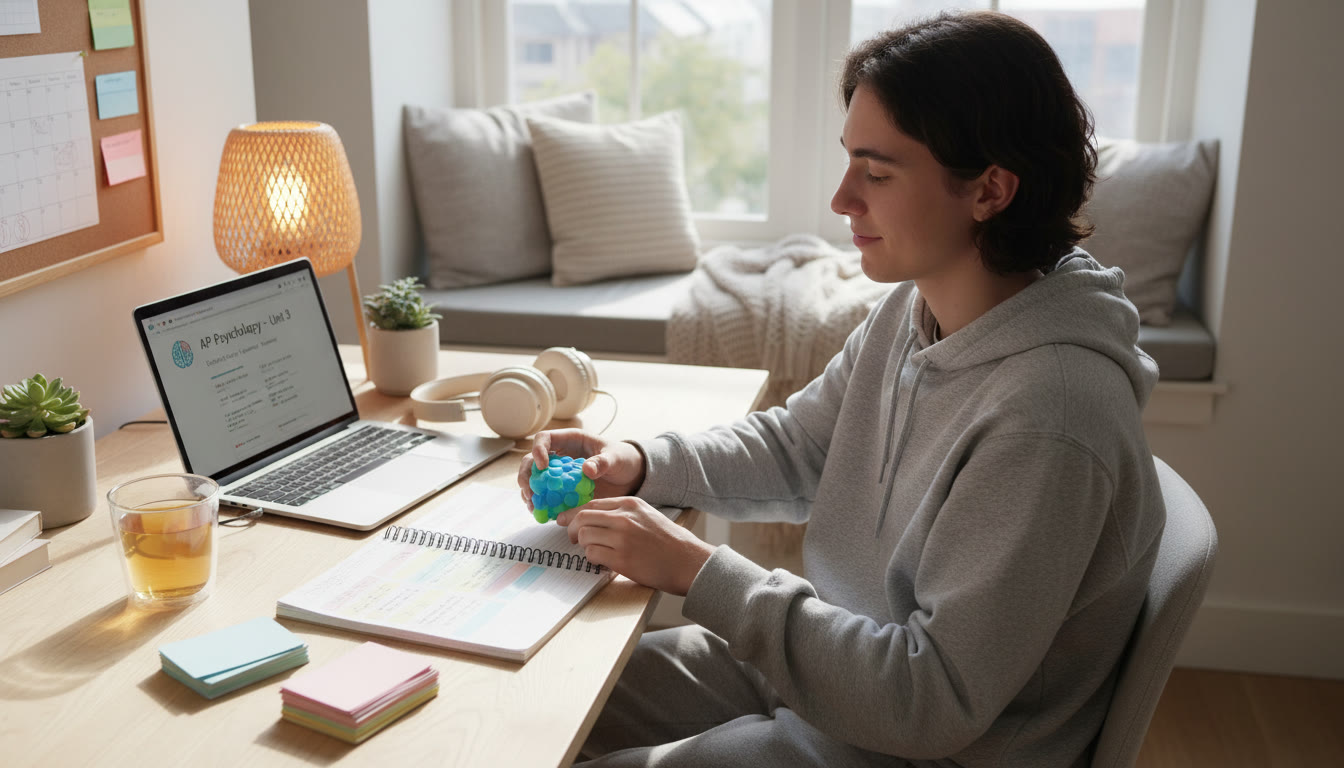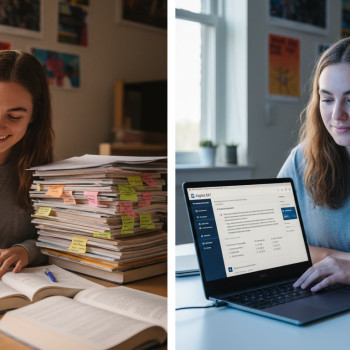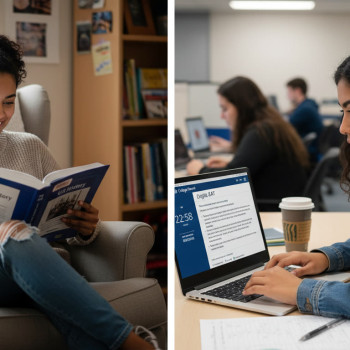Neurodiversity-Affirming Study Support: A Parent’s Guide to Helping Your AP Student Thrive
Watching your child prepare for an AP (Advanced Placement) exam can feel like standing at the edge of a cliff—equal parts pride and nerves. If your student is neurodiverse—perhaps autistic, ADHD, dyslexic, or processing information differently—you may wonder how to balance high expectations with compassionate support. This guide is written for you: practical, hopeful, and rooted in real-world steps that honor how your child learns best.
Why a Neurodiversity-Affirming Approach Matters
Neurodiversity-affirming support starts from a simple but powerful idea: difference is not deficit. When preparing for AP exams, that perspective shifts the focus from “fixing” the student to creating strategies, environments, and study plans that match their strengths and needs.
For parents, that means moving away from one-size-fits-all methods (endless flashcards, marathon study sessions) and toward tailored practices that make studying effective and sustainable. An affirmative approach reduces anxiety, increases confidence, and often leads to better performance—because it’s less about brute-force studying and more about smart, strengths-based preparation.

First Steps: Know the Terrain and Your Child
Before jumping into study plans, start with three gentle assessments at home:
- Learning Profile: What helps your child focus? Do they prefer audio explanations, visuals, or hands-on examples?
- Sensory Map: Note lights, noise levels, and tactile needs. Small changes—soft lighting or headphones—can make huge differences.
- Executive Function Snapshot: How does your child handle planning, time management, and task initiation? These skills are often the practical bottlenecks in AP prep.
Write these down. You don’t need a diagnosis to do this—just observe and ask. This living document becomes the foundation for tailored study choices and accommodation requests if needed.
Designing a Neurodiverse-Friendly Study Plan
One of the most powerful things you can do is co-create a study plan with your child. When students have agency, they’re more likely to stick with the plan.
Principles of an Effective Plan
- Chunked Learning: Break large tasks into 20–40 minute focused blocks with 10–20 minute sensory breaks (movement, snack, calming activity).
- Multisensory Techniques: Combine reading, speaking, drawing, and listening. For example, read a passage, summarize aloud, sketch a visual map, then listen to a summary.
- Predictability with Flexibility: Keep a consistent daily rhythm but allow for swapping tasks based on energy and focus.
- Strengths-Based Focus: Lean into what your child already does well—e.g., if they’re great at spotting patterns, use that for AP Calculus or AP Biology.
- Avoid All-Or-Nothing Thinking: Missed a study block? Reset without guilt. Momentum builds with consistency, not perfection.
Sample Weekly Structure
The example below is flexible—adjust durations to suit attention spans and school schedules.
| Day | Focus | Study Blocks | Support/Tools |
|---|---|---|---|
| Monday | Content Review (Concepts) | 3 x 30 min | Color-coded notes, visual maps |
| Tuesday | Practice Problems | 4 x 25 min | Timed quizzes, scratch paper |
| Wednesday | Active Recall | 3 x 30 min | Flashcards (audio + visual) |
| Thursday | Writing/Free Response | 2 x 40 min | Outlines, sentence starters |
| Friday | Mixed Practice + Review | 3 x 30 min | Short practice exam sections |
| Weekend | Rest + Light Review | Flexible | Fun study: games, podcasts, group study |
Tools That Often Help
- Text-to-speech and speech-to-text tools for reading and writing support.
- Colored overlays or highlighters to reduce visual stress and aid memory.
- Noise-cancelling headphones or white-noise apps to manage auditory distraction.
- Digital planners and timers (Pomodoro apps) to scaffold executive function.
- Fidget tools and sensory breaks built into the schedule.
Accommodations and the College Board AP Exams
Many neurodiverse students benefit from testing accommodations—extra time, extended breaks, or alternate formats. If your child already receives accommodations in school, those often form the basis for College Board requests. If not, start early: documentation and school-based processes can take time.
How to Approach Accommodations
Begin with your school’s counselor or student services. Gather recent documentation that shows how your child’s disability affects testing. Be specific: say whether processing speed, sensory overload, reading fluency, or sustained attention are impacted. These concrete examples help the review team understand real needs.
Even if formal accommodations aren’t pursued, you can create an AP-day strategy at home: a consistent pre-exam routine, sensory tools (e.g., stress ball), and mock-test practice to build stamina. Practicing under conditions similar to the actual test reduces surprise and stress.
Table: Common Challenges and Affirming Supports
| Challenge | Affirming Support | How It Helps |
|---|---|---|
| Sensory Overwhelm | Headphones, soft lighting, sensory breaks | Reduces anxiety and improves concentration |
| Slow Processing | Extended time, untimed practice | Allows full demonstration of knowledge |
| Reading Fluency | Text-to-speech, chunked passages | Improves comprehension and reduces fatigue |
| Executive Function | Structured checklists, timers, tutor coaching | Makes start/finish and planning easier |
| Test Anxiety | Practice exams + calming rituals | Builds confidence through familiarity |
Study Techniques That Respect How Your Child Thinks
Here are evidence-aligned methods that translate well for neurodiverse learners. Each method can be adapted—try combinations and see what sticks.
1. Active Retrieval, But Make It Creative
Instead of passive re-reading, use retrieval practice: ask your child to explain a concept out loud as if teaching someone else, to draw a process from memory, or to record short audio summaries. For students who think visually, sketching a concept map can be far more powerful than repeated reading.
2. Interleaving With Support
Mixing different types of problems (e.g., calculus derivatives then practice with graphs) improves learning, but it can feel chaotic. Buffer interleaving with a simple label system—”Warm-Up,” “Core,” and “Wrap-Up”—so the brain knows what to expect.
3. Adaptive Practice With Immediate Feedback
Short practice sets with quick, supportive feedback help correct misconceptions before they take root. When your child gets a problem wrong, focus on the process rather than the outcome: ask what they were thinking and scaffold a small correction.
4. Chunking and Layered Review
Teach in layers: introduce big-picture ideas first, then add details in subsequent passes. This reduces overload and helps long-term retention. For example, when studying AP U.S. History, first build a timeline of main events, then layer in causes, consequences, and key figures.
Emotional and Motivational Support—Because It Matters
Academic strategies are important, but emotional support is the soil in which learning grows. Neurodiverse students often face a double load: the material itself plus the mental energy of navigating social and sensory demands.
Ways Parents Can Provide Emotional Support
- Normalize Struggle: Say aloud that some topics are hard and that struggle is part of learning. This reduces shame and encourages persistence.
- Celebrate Small Wins: Mark progress—completing a full practice section, mastering a single concept—with real recognition.
- Model Calm: Your tone influences stress levels. Use neutral language around setbacks: “That didn’t go as planned—what’s next?”
- Offer Choices: Give two acceptable options (“Would you like to do review now or after a snack?”). Decisions feel empowering and reduce friction.
How Personalized Tutoring Fits In
One-on-one tutoring can be transformational when it’s tailored and consistent. Personalized tutors can model strategies, adapt pacing, and provide the immediate feedback that many neurodiverse students need. If you’re considering tutoring, look for programs that emphasize individualized learning plans and experience with neurodiversity.
For example, Sparkl’s personalized tutoring offers 1-on-1 guidance, tailored study plans, expert tutors, and AI-driven insights that help target weak spots without overwhelming the student. When tutoring aligns with the student’s learning profile, it becomes less about more hours and more about smarter practice.
What to Expect from High-Quality Tutoring
- Assessment-driven plans that start with strengths and specific gaps.
- Structured sessions with clear objectives and predictable routines.
- Frequent progress checks and adjustments to pace and methods.
- Coaching on executive function skills (planning, starting tasks, time management).
Practical Day-Of-Exam Strategies
On test day, simple rituals grounded in preparation make a surprisingly large difference.
- Morning Routine: Keep it familiar—favorite breakfast, sensory item if needed, and a calming pre-exam warm-up (breathing or a two-minute review).
- Timing Tools: If your child has accommodations, practice with equivalent timing beforehand. If not, practice pacing with break checkpoints.
- Exam Kit: Comfortable clothing, analog watch (if allowed), allowed snacks for breaks, and a small comfort item that isn’t distracting.
- Post-Test Plan: Plan a positive activity after the exam to celebrate effort and reset—whatever feels rewarding to your child.
Partnering With School and Teachers
Your child’s teachers are allies. Share the learning profile you created and ask for small classroom supports—like preferential seating, assignment chunking, or test previews. Offer to collaborate: a quick weekly email can coordinate strategies between home, school, and any tutor.
Advocacy doesn’t have to be combative. Frame conversations around helping your child show what they know. Teachers want students to succeed; clear, specific requests make it easier for them to help.
When to Seek Professional Evaluations
If your child struggles despite thoughtful strategies, or if you need documentation for accommodations, consider formal evaluations. A neuropsychological or educational assessment provides detailed guidance on learning profiles, strengths, and recommended supports. These assessments also often make the accommodations process smoother when applying to testing bodies or colleges.
Questions to Ask a Professional
- What are my child’s cognitive strengths and challenges?
- Which accommodations would likely be most effective for standardized tests?
- What practical classroom strategies do you recommend?
- How often should we reassess progress?
Putting It All Together: A Realistic Plan for the Next 12 Weeks
Here’s a condensed roadmap you can tailor to your family. It focuses on steady, affirming progress rather than last-minute cramming.
- Weeks 1–2: Build the learning profile, sensory map, and a weekly routine. Start light—two consistent daily blocks.
- Weeks 3–6: Increase practice to target weak areas. Begin timed practice sessions in small increments. Introduce a tutor if helpful.
- Weeks 7–9: Do mixed practice and full-section timed sessions. Work on pacing and exam strategies.
- Weeks 10–12: Lighten overall load, focus on retrieval and confidence-building. Solidify test-day routines and celebrate progress.
This timeline is flexible—some students need more time on content, others on stamina. The goal is consistent, low-pressure progress.
Parting Thoughts for Parents
Your calm, consistent support is one of the greatest predictors of success. Neurodiverse learners often bring creativity, pattern recognition, and unique problem-solving skills to AP subjects—qualities that standardized tests don’t always highlight, but that careful, affirming preparation can draw out.
Remember: effort is not the same as misery. When study practices are respectful of how your child experiences the world, learning becomes sustainable and meaningful. Tools like personalized tutoring, including 1-on-1 guidance and tailored study plans from services such as Sparkl, can be a helpful part of that ecosystem—especially when paired with consistent home routines and school collaboration.
You’re not just preparing for a test—you’re helping your child develop strategies they’ll use for a lifetime. That’s worth celebrating every step of the way.

Quick Checklist for Tomorrow
- Write one short, strength-focused learning goal together.
- Set two study blocks (20–30 minutes) with a planned sensory break.
- Pick one tool to try (text-to-speech, color-coding, or a Pomodoro timer).
- Send a brief note to your child’s teacher with one specific request.
- Book a short check-in with any tutor to align on the student’s learning profile.
Final Encouragement
There’s no single right way to prepare a neurodiverse student for AP exams. What matters is curiosity, patience, and a willingness to adapt. Keep asking your child what helps, celebrate small gains, and treat setbacks as data rather than failure. With an affirming approach, your child can not only succeed on AP exams but also gain study habits and confidence that last long after test day.
If you’d like, I can help you draft a personalized weekly plan or a script for talking with your child’s teacher—and together we can turn the next study block into a small, achievable victory.



















No Comments
Leave a comment Cancel